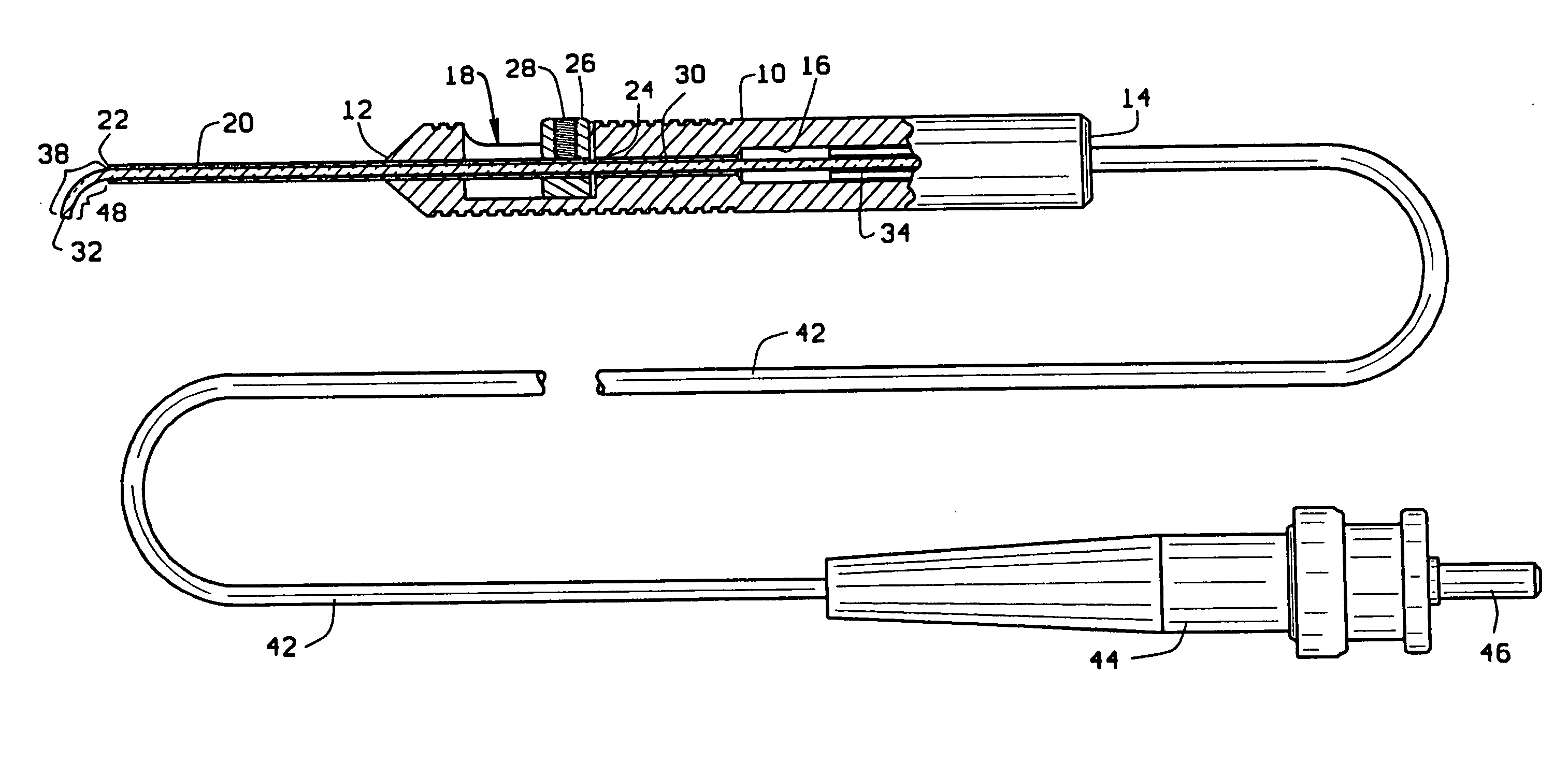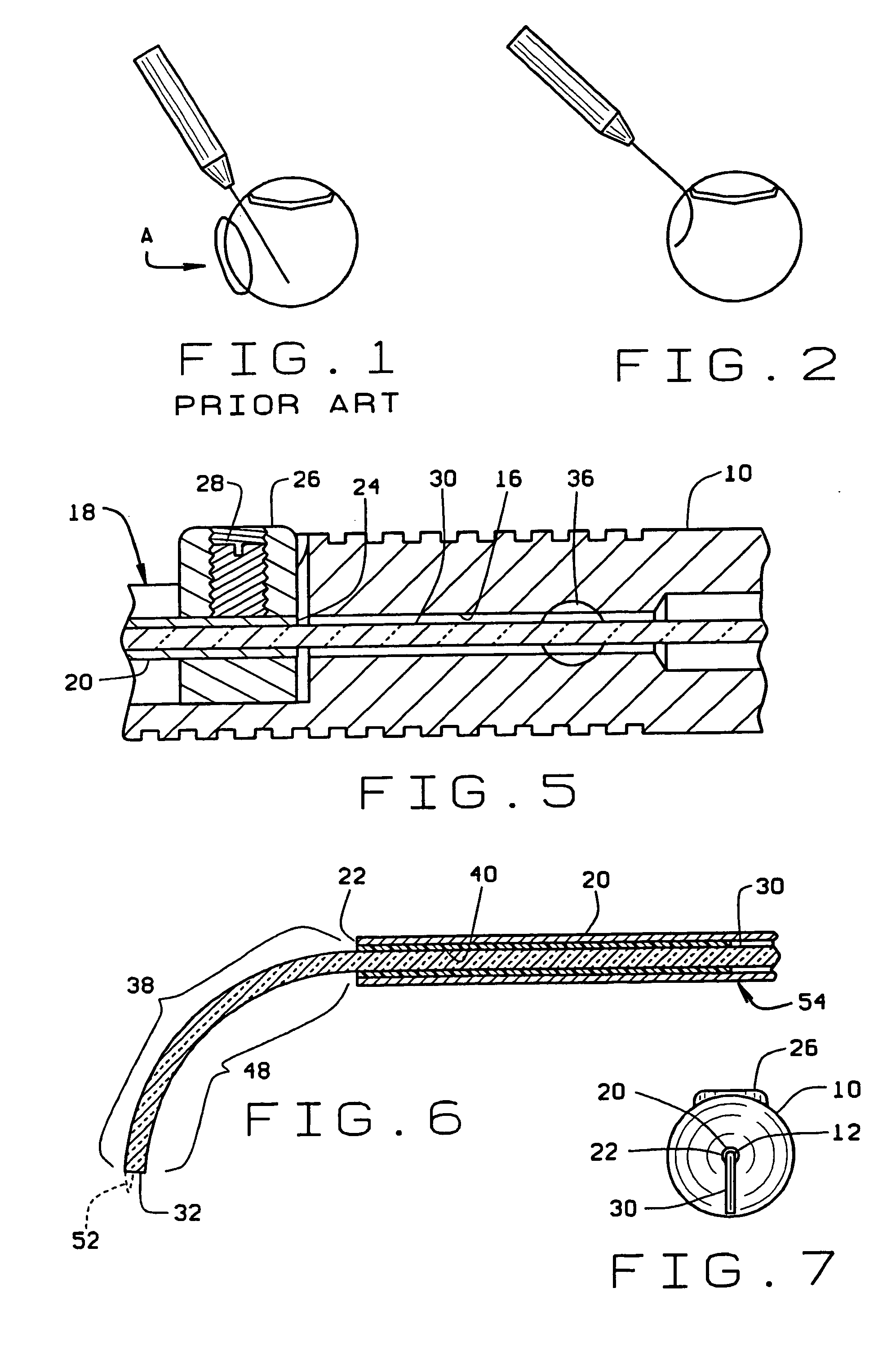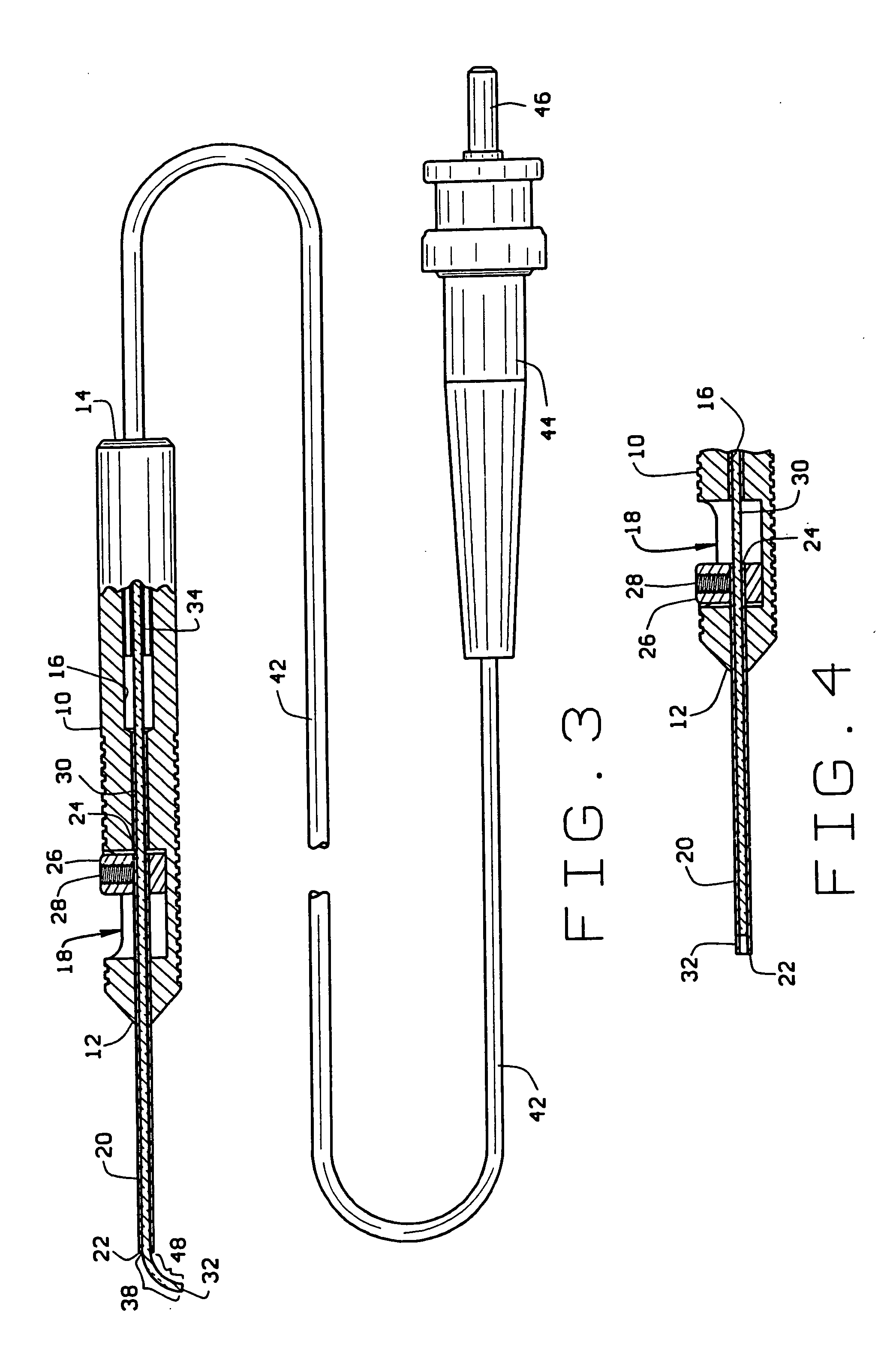Directional laser probe
a laser probe and directional technology, applied in the field of microsurgical laser probes, can solve the problems of inability to achieve optimal laser light delivery to the surgical site, inability to insert curved laser probes through straight cannulas, and difficult to use straight laser probes. to achieve the effect of easy deflection
- Summary
- Abstract
- Description
- Claims
- Application Information
AI Technical Summary
Benefits of technology
Problems solved by technology
Method used
Image
Examples
first embodiment
[0034] In use of the directional laser probe, the optic fiber connector 44 is first attached to a laser power source. With the finger pad 26 in its pushed forward position, the optic fiber is contained in the sleeve 20 which projects in a straight line from the distal end of the handle. The sleeve 20 is then inserted through a cannula positioned in an incision in the eye or inserted directly through the incision positioning the sleeve in the eye interior. The finger pad 26 is then slowly moved toward the rear of the handle causing the sleeve 20 to slowly move toward its pulled back position relative to the handle. This, in turn, causes the distal end portion 48 of the optic fiber contained in the pre-bent portion 38 of the shape memory tip to gradually bend from its straight configuration toward its 90° configuration. The bending of the fiber allows optimal positioning of the fiber tip to areas where a straight fiber may not reach. Rotation of the entire instrument about its center ...
second embodiment
[0038] the directional laser probe shown in FIGS. 8 and 9 has an elongate narrow handle or hand piece 10′ having opposite distal 12′ and proximal 14′ ends. The handle 10′ is dimensioned to a size similar to that of a pencil to fit comfortably in the surgeons hand. The handle is preferably manufactured of a disposable medical grade plastic. A hollow bore 16′ extends through the center of the handle from its distal end 12′ to its proximal end 14′. The handle center bore 16′ has a center axis that defines mutually perpendicular axial and radial directions relative to the handle 10′. The bore 16′ has a necked down portion adjacent the handle distal end 12′. A recess 18′ is formed radially into a side of the handle and intersects with the center bore 16′. The recess 18′ extends axially along a short length of the handle forming an axial slot in the side of the handle.
[0039] A cylindrical, narrow rigid tube or sleeve 20′ is received in the necked down portion of the handle bore 16′ at the...
PUM
 Login to View More
Login to View More Abstract
Description
Claims
Application Information
 Login to View More
Login to View More - R&D
- Intellectual Property
- Life Sciences
- Materials
- Tech Scout
- Unparalleled Data Quality
- Higher Quality Content
- 60% Fewer Hallucinations
Browse by: Latest US Patents, China's latest patents, Technical Efficacy Thesaurus, Application Domain, Technology Topic, Popular Technical Reports.
© 2025 PatSnap. All rights reserved.Legal|Privacy policy|Modern Slavery Act Transparency Statement|Sitemap|About US| Contact US: help@patsnap.com



